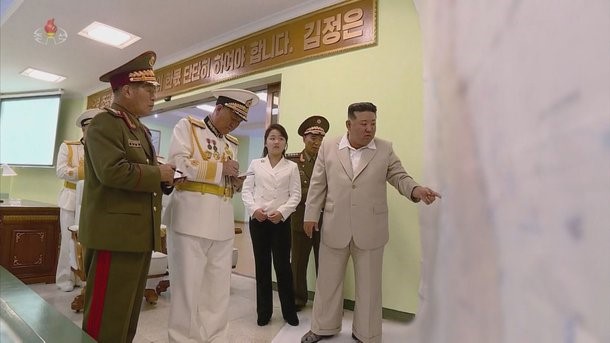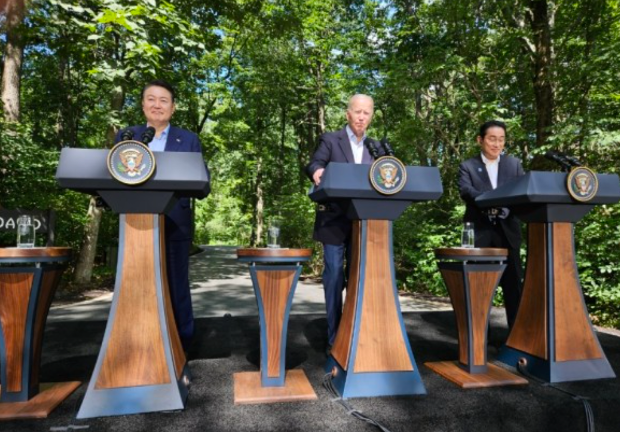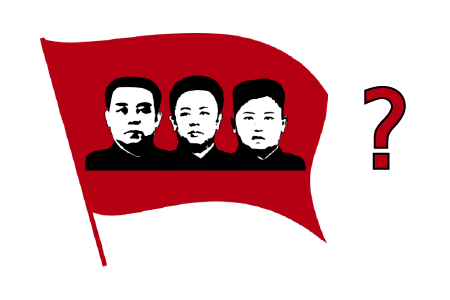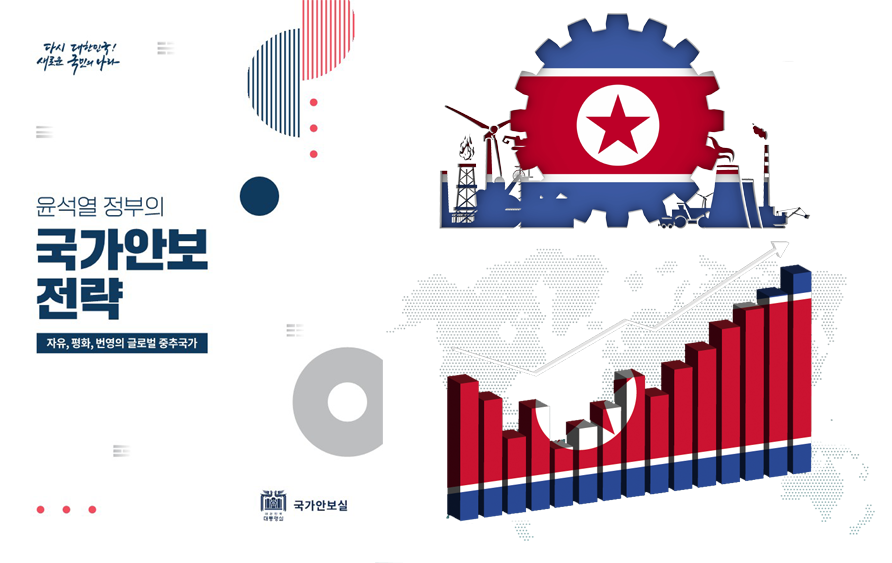
Significance and Implications of Kim Ju Ae’s Public Appearance
Commentary | September 11, 2023
Kyong Hui Choi
President, SAND Institute
Kyong Hui Choi, president of the South and North Development (SAND) Institute, explains that Kim Jong Un’s decision to showcase his young daughter, Kim Ju Ae, to the public reflects his desire to secure absolute authority in the North Korean society by elevating himself as the “Great Father of the People.” Recalling that Kim Jong Il first appeared as a devout son and embodiment of loyalty to Kim Il Sung, Choi claims that Kim Jong Un aims to utilize his daughter as a means to force unconditional loyalty and piety from the people by introducing an additional concept of “filial piety” toward the leader. Furthermore, by arguing that Kim Ju Ae’s public appearances imply an exacerbation of the sanctification of the “Paektu bloodline” and a lack of willingness to denuclearize, Choi urges the international community to address DPRK’s nuclear and human rights issues concurrently.
The ongoing debate surrounding the potential succession of North Korea’s fourth generation leadership remains unabated. When Kim Jong Un appeared with his daughter, Kim Ju Ae, some experts assessed this as the “nomination” of a potential successor. Some observed that the location of Kim Ju Ae’s first public appearance, notably at the testing site for the new intercontinental ballistic missile (ICBM) ‘Hwasongpho-17,’ indicates an intention to highlight the value of nuclear weapons and garner international attention. Other analysis suggests that Kim Ju Ae’s frequent appearances might be related to the rumored power struggle between Ri Sol Ju and Kim Yo Jong. While diverse interpretations are possible, it is essential to examine the unprecedented appearance of the young daughter within the context of the underlying dynamics of leadership.
North Korea’s governance relies on the extent and the level of the leader’s authority. Having ascended to power in his twenties, Kim Jong Un solidified his control over the party, state, and military during his ten-year rule. From an authoritarian perspective, Kim Jong Un, who is approaching his forties, introduces his young daughter to solidify his image as the “Great Father of the People [inminŭi widaehan ŏbŏi; 인민의 위대한 어버이].” This move aims to secure absolute influence in North Korean society deeply rooted in Confucian culture. Even during the early 1990s marked by social unrest due to the collapse of the Communist bloc, the DPRK regime reverted to the “Socialist Grand Family” discourse and pursued unity by exalting the “Great Father [widaehan ŏbŏi; 위대한 어버이].”
While Kim Jong Un has persistently been conducting political campaigns to elevate himself as a parental figure, recent efforts focus heavily on manipulating the image of a “father [ŏbŏi; 어버이].” Introducing the concept of the leader’s dedication reciprocated by people’s loyalty alongside the Confucian idea of filial piety, he further consolidates his absolute dominance. In this context, Kim Ju Ae serves as a model of filial piety, reinforcing Kim Jong Un’s image manipulation efforts.
According to the Ministry of Unification, the honorific term “Great Leader [suryŏng; 수령]” was used to refer to Kim Jong Un 26 times as of July 2023, which is a notable increase from 23 times in 2022 and 16 times in 2021 (Ha 2023). The term “father,” often used in conjunction with “Great Leader,” has also begun to include young adults, not just children. The singular honorific referring to a “Supreme Leader [suryŏngnim; 수령님]” is reserved only for Kim Il Sung, the founding father and creator of state ideology. In terms of their conceptual meanings, “Great Leader [widaehan suryŏng; 위대한 수령] or “Guidance of the Great Leader [suryŏngŭi ryŏngdo; 수령의 령도] include the three Kims. As the term “Fatherly Great Leader [ŏbŏi suryŏng; 어버이 수령]” evokes the image of Kim Il Sung, Kim Jong Un seeks to establish his authority by aligning himself with his father’s legacy.
On November 18 of last year, Rodong Sinmun released photographs of Kim Jong Un inspecting the ICBM “Hwasongpho-17“ launch site with his daughter, Kim Ju Ae. The front page depicted Kim Jong Un overseeing the ICBM launch, while the second page featured a photo of Kim Jong Un and Kim Ju Ae holding hands, and the third page showed Kim Jong Un, Ri Sol Ju, and Kim Ju Ae together. The strategic layout of these photos emphasizes the parent-child relationship, aiming to establish a model of an intimate family centered around Kim Jong Un. Similarly, during the celebration of the 75th founding anniversary of the Korean People’s Army on February 8, Kim Jong Un appeared with his daughter, Kim Ju Ae, and his wife, Ri Sol Ju. At the previous banquet for military officials, Kim Ju Ae appeared in the middle of the couple, showcasing her presence. This narrative of familial warmth, filial respect, and loyalty serves as a model for a socialist family order.
When Kim Jong Il was designated as Kim Il Sung’s successor, he played a critical role as the embodiment of loyalty to the Great Leader and later became a model of a devout son to his parents. Such loyalty and filial piety expanded to the people’s scope and ultimately played a decisive role in deifying his father. Now, Kim Jong Un appears to be searching for an individual akin to his father to emulate his grandfather’s legacy. However, recreating a structure reminiscent of the past presents significant challenges, particularly considering Kim Jong Un’s ascension to supreme leadership at a relatively young age. Although Kim Yo Jong has been assigned the roles of both messenger and enforcer for Kim Jong Un in matters of ideology and international relations, her status as a sibling inherently carries certain limitations when it comes to elevating Kim Jong Un to a paternal figure. Therefore, the emergence of Kim Ju Ae seems to serve as a way for Kim Jong Un to strengthen his image as the caring and reliable father of the people.
At times of social unrest, people tend to seek the absolute presence of parental figures, mirroring the way individuals turn to deities during crises. Kim Jong Un capitalizes on this by constructing a fatherly image to expand his authority and consequently reestablish social order. This is evident in recent legislative measures like the State Secrets Protection Act (2023), State Symbol Act (2023), and Pyongyang Cultural Language Protection Act (2023). Kim’s objective is to reinforce the existing system of control and allegiance by adding a dimension of filial devotion and loyalty. This endeavor is indicative of the ongoing evolution of North Korea into Kim Jong Un’s personal domain. This indicates North Korea’s ongoing shift into Kim Jong Un’s personal domain.
The DPRK regime indoctrinates its people by asserting that while parents provide physical life to individuals, political life is bestowed by the Great Leader. According to their ideology, this is why one must show unwavering loyalty and piety to the “Fatherly Great Leader.” While Kim Ju Ae’s recent prominence bears some resemblance to Kim Jong Il’s role in relation to Kim Il-sung, she is still improbable as a credible successor. In such a deeply patriarchal Confucian culture, the obstacles are significant for Kim Ju Ae, as a woman, to ascend to power. Even if she were to succeed, the following generation with a different surname would likely assume power, implying a discontinuity in the Kim dynasty. In short, Kim Ju Ae’s appearance serves merely as a tool to enhance Kim Jong Un’s governance.
The introduction of Kim Ju Ae does serve multiple political objectives including promoting the legitimacy of a nuclear-armed state, ensuring the security of the “future generation,” and justifying the concept of a fourth-generation succession. However, Kim Jong Un’s portrayal of a caring and compassionate parent, embracing filial piety from his young daughter, underscores the notion of a benevolent “father” figure overseeing the “Socialist Grand Family.” Kim Jong Un, who aspires to a return to the era of Kim Il-sung, seeks to replicate the loyalty and filial piety of that time in today’s society. However, it remains uncertain to what extent the North Korean population, who have experienced over two decades of marketization and self-sufficiency, will devote their loyalty and filial piety to the so-called “fatherly” Kim Jong Un.
Kim Jong-un referred to North Korea’s challenging circumstances of the previous year as the “greatest crisis since the founding of the nation.” His decision to involve his still-underage daughter in the political arena, thereby capturing the attention of the public, has stemmed from the alarm to address both internal and external difficulties. This sense of urgency underscores the imperative for the stabilization of the Kim Jong-un regime, and the emergence of Kim Ju Ae in this context yields several noteworthy implications.
First and foremost, Kim Ju Ae is poised to heighten the sanctification of the “Paektu bloodline.” North Korean media has used honorific appellations such as “beloved daughter,” “noble daughter,” and “respected daughter” upon Kim Ju Ae. Her forthcoming public appearances alongside Kim Jong Un is expected to play a pivotal role in the idolization of the “Paektu bloodline.” This phenomenon, however, engenders a serious concern, accentuating the propagation of the North Korean regime’s authoritarian and hereditary characteristics.
Secondly, Kim Ju Ae’s presence will exacerbate the dire political situation of the DPRK society and the false consciousness of the people. Having inherited power from his grandfather and father, Kim Jong Un now has introduced his daughter to elevate his authority as a “Great Father.” In this process, the regime’s monopolization and selective dissemination of information, as well as repetitive indoctrination, North Korean citizens develop a mindset for self-submission within the context of a “single grand family.” Individual dignity and value are nonexistent, as a false consciousness prevails that recognizes only Kim Jong Un and the Paektu bloodline. Therefore, it is essential to explore approaches that encourage North Korea to embrace universal values and become a part of the international community.
Thirdly, the frequent exposure of Kim Ju Ae at ICBM launch sites and military events has highlighted the DPRK regime’s perception that “bloodline” and “nuclear weapons” are like two sides of a coin. Following Kim Yo Jong’s pronouncement in August 2022 that nuclear weapons constitute North Korea’s national polity, North Korea adopted a nuclear doctrine in September, asserting rights to preemptive strike and guidelines for employing nuclear weapons. These subsequent actions signify an unequivocal lack of North Korea’s will to denuclearize, as doing so would signify the collapse of the “Paektu bloodline.” As such, resolute international responses are imperative to push North Korea toward the path of denuclearization.
These implications underscore the interconnectedness of Kim Ju Ae’s emergence with some critical predicaments facing North Korea. While North Korea symbolizes specific figures and “bloodlines,” the members of the society suffer human rights violations, and its nuclear capabilities serve as a critical means of threat to the international community. All in all, North Korean human rights issues must be dealt alongside the nuclear problem.
■ Kyong Hui Choi is the president of the South and North Development (SAND) Institute.
■ Typeset by: Jisoo Park, Research Associate
For Inquiries: 02 2277 1683 (ext. 208) | jspark@eai.or.kr
Governance and Politics

Could the Trilateral Summit at Camp David Be a Game Changer?
Eunjung Lim | September 01, 2023

Succeeding Kim Jong Un: Will Kim Ju Ae Be the Next Leader?
Seong-Chang Cheong | August 21, 2023

One Thing It Lacks: South Korea’s North Korea Policy in 2023 National Security Strategy
Yang Gyu Kim | June 30, 2023
LIST